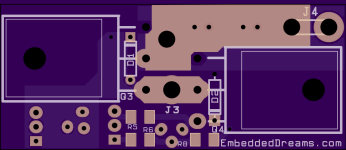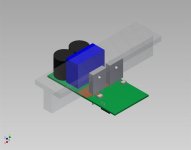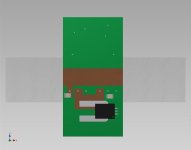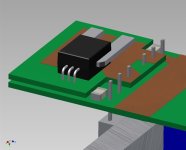nieles
10 kW
hey guys,
so i had this idea in my head for some time now, and decided to make a 3D mock-up
this is a single phase, so three of these will form the power stage for a controller
caps:
2x 4,7uF poly caps (max ripple current 9A rms, 5,3mR ESR)
2x 330uF el. caps (kze type)
2x 1812 ceramic cap
power terminals:
M4 thread (datasheet)
current sensor:
ACS758
Mosfets:
TO-247
what do you guys think?
I would like to hear your comments/criticism!
Also, check out the 3D PDF
dimentions what you see in the pictures: 50x75x45mm (LxWxH)
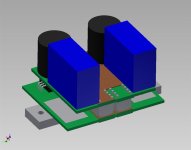
the grey area on the bottom pcb is where the MOSFET driver will be.
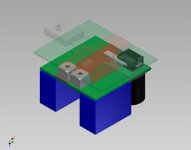
View attachment 3
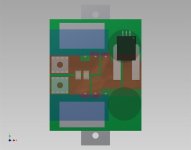

(3D PDF)
so i had this idea in my head for some time now, and decided to make a 3D mock-up
this is a single phase, so three of these will form the power stage for a controller
caps:
2x 4,7uF poly caps (max ripple current 9A rms, 5,3mR ESR)
2x 330uF el. caps (kze type)
2x 1812 ceramic cap
power terminals:
M4 thread (datasheet)
current sensor:
ACS758
Mosfets:
TO-247
what do you guys think?
I would like to hear your comments/criticism!
Also, check out the 3D PDF
dimentions what you see in the pictures: 50x75x45mm (LxWxH)

the grey area on the bottom pcb is where the MOSFET driver will be.

View attachment 3


(3D PDF)


